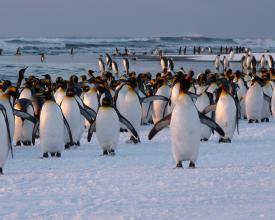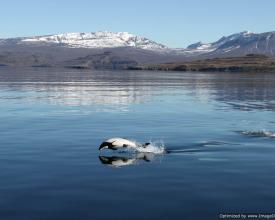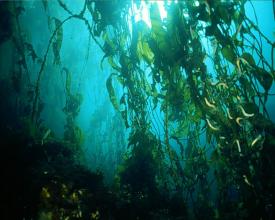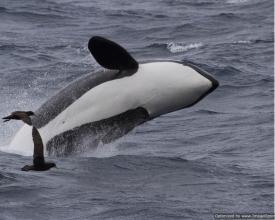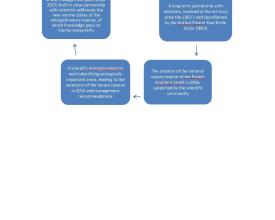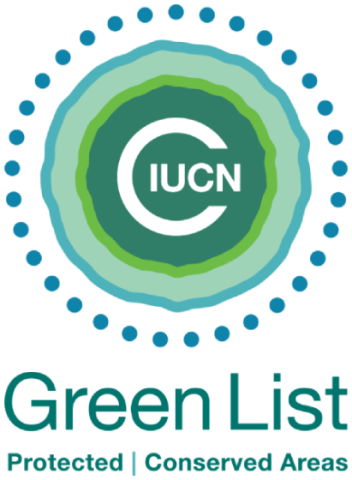
Un modèle de gestion scientifique pour protéger les écosystèmes subantarctiques isolés et vulnérables
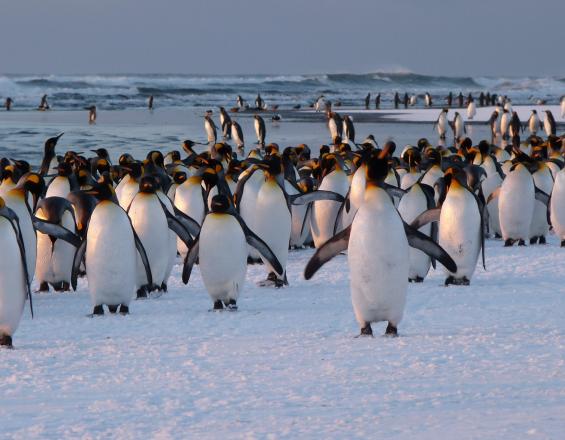
Depuis les années 1950, les collectivités territoriales des Terres australes et antarctiques françaises (TAAF) travaillent main dans la main avec la communauté scientifique pour la protection et la gestion des Terres australes françaises (TAF), aboutissant à la création de la réserve naturelle des TAF en 2006 et à son extension en mer en 2016 (672 969 km2). Cette très grande AMP soulève de nouveaux défis liés au manque de connaissances sur les écosystèmes marins et aux impacts déjà visibles des changements globaux. Le modèle scientifique de la TAF est essentiel pour une gestion réussie de l'une des plus grandes AMP au monde.
Contexte
Défis à relever
- Vulnérabilité des écosystèmes marins subantarctiques uniques, présentant l'une des plus importantes richesses et diversités d'espèces dans l'océan austral.
- Nécessité d'optimiser les ressources logistiques, financières et humaines pour gérer l'une des plus grandes zones marines protégées au monde.
- Territoire peu documenté où d'importantes lacunes subsistent en matière de connaissances.
- Difficulté de surveiller et d'approvisionner un territoire très isolé, situé à une distance de 2000 à 5000 km de tout continent.
- Impacts des changements globaux qui affectent déjà la TAF (déplacement vers le sud des fronts océaniques, augmentation de la température et de l'acidité, activités humaines (pêche)...).
Emplacement
Traiter
Résumé du processus
Voir le schéma ci-dessous.
Blocs de construction
Un partenariat à long terme avec les scientifiques
Depuis les années 1950, les scientifiques étudient le caractère unique des Terres australes françaises (TAF), qui constituent un laboratoire à ciel ouvert pour les chercheurs en sciences naturelles. Les premières stations scientifiques construites à l'époque constituent aujourd'hui les chefs-lieux de districts qui accueillent chaque année plus de 200 scientifiques issus de 60 programmes de recherche. L'Institut Polaire Paul-Emile Victor (IPEV) coordonne ces activités et assure l'excellence de la recherche scientifique dans les TAF.
Depuis 1955, la collectivité territoriale des Terres australes et antarctiques françaises (TAAF) administre ce territoire, plaçant la science et la protection de l'environnement comme pierre angulaire de la souveraineté française sur les TAF.
Consciente de la vulnérabilité de ces écosystèmes, la communauté scientifique a plaidé pour la création de la réserve naturelle des TAF et conseillé son extension en mer en 2016. La gestion de la réserve naturelle, assurée par les TAAF, s'appuie sur un comité scientifique, le Comité de l'environnement polaire (CEP), qui émet des avis sur les actions de recherche et de gestion.
Avec l'élargissement du périmètre de la réserve, le lien avec les scientifiques est plus que jamais essentiel. Le nouveau plan de gestion prévoit des activités de recherche pour une gestion adaptée et efficace des écosystèmes riches et vulnérables des TAF.
Facteurs favorables
Le partenariat historique avec l'Institut Paul-Emile Victor (IPEV), coordinateur des programmes scientifiques en TAF, assure l'excellence des activités de recherche. La forte implication des partenaires scientifiques a permis la création de la Réserve Naturelle et son extension en mer grâce à un travail d'écorégionalisation. Leur rôle dans la gouvernance et dans l'élaboration du plan de gestion assure aujourd'hui la robustesse des actions de gestion.
Leçon apprise
Les organisations scientifiques étant impliquées dans la TAF depuis plus de 60 ans, l'adhésion de l'ensemble de la communauté scientifique est obligatoire pour la mise en place d'une réserve naturelle et sa réglementation. L'implication des scientifiques dans la gouvernance et la gestion de la réserve garantit l'appropriation des actions de conservation par ces acteurs majeurs.
Si les bénéfices mutuels des activités scientifiques et de conservation sont reconnus par les scientifiques et la collectivité territoriale des Terres australes et antarctiques françaises (TAAF), une définition claire des responsabilités de chacun, avec par exemple l'établissement de conventions, est essentielle pour éviter tout conflit.
La recherche étant l'une des principales activités dans les Terres australes françaises, les impacts environnementaux des programmes scientifiques doivent être correctement évalués et validés par le comité scientifique.
Un processus d'écorégionalisation menant à la création de l'une des plus grandes AMP au monde
Depuis 2011, la communauté scientifique a engagé un travail d'écorégionalisation, conduisant à l'identification d'aires marines importantes dans les Terres australes françaises (TAF) et la haute mer voisine. Dans ce cadre, des aires marines d'importance écologique ou biologique ont été désignées par la CDB et comprennent une grande partie des eaux des TAF. En 2016, les résultats du programme CROMEBA (Crozet Marine Ecosystem Based Approach) et d'un atelier sur les écosystèmes marins de Kerguelen ont contribué à la planification de la conservation spatiale de la réserve naturelle élargie des TAF. Les apports scientifiques ont permis de désigner plus de 128 000 km2 de zone de protection stricte (Cat. Ia. UICN) et d'identifier les priorités d'actions pour le nouveau plan de gestion. Dans un contexte de lacunes importantes dans les connaissances sur les écosystèmes marins, le renforcement des programmes de recherche dans les zones peu documentées, en particulier sur les écosystèmes des grands fonds et du large, contribue à la mise à jour régulière des objectifs de gestion, de la réglementation et du statut de protection de la réserve naturelle. Ce travail contribuera également au développement du réseau d'AMP de la CCAMLR en Antarctique et à la promotion de la création d'AMP en haute mer.
Facteurs favorables
- Une forte implication de la communauté scientifique auprès de laquelle le territoire et le processus d'extension ont suscité un fort intérêt
- Un contexte politique favorable, avec la mise en place de la "Loi Biodiversité" en France, permettant le développement d'AMP dans la ZEE française, et les initiatives de la CCAMLR pour la mise en place d'un réseau d'AMP dans l'Océan Austral.
- Des territoires inhabités, les scientifiques et les pêcheurs étant les seuls utilisateurs de la réserve naturelle, ce qui réduit les conflits d'usage possibles.
Leçon apprise
- L'expertise scientifique est essentielle pour combler les lacunes des données et faire face à l'incertitude.
- Le processus d'écorégionalisation est un outil clé pour la mise en place d'une planification efficace de la conservation de l'espace.
- Le soutien politique et les conventions internationales sont décisifs pour la mise en œuvre d'une AMP.
Un plan de gestion construit avec la communauté scientifique pour assurer la robustesse scientifique de la gestion de la Réserve naturelle
Consciente de la vulnérabilité des écosystèmes des Terres australes françaises (TAF), la communauté scientifique a plaidé pour une protection renforcée, aboutissant à la création de la réserve naturelle en 2006. Le premier plan de gestion (2011-2015) a défini 90 actions de conservation et de recherche à mener sur le territoire (majoritairement terrestre), dont 35% d'actions de recherche appliquée. Le second plan de gestion (2018-2027) s'applique à l'ensemble de la ZEE des TAF (majoritairement marine), conformément au décret d'extension et à la réglementation du périmètre de protection autour de la réserve naturelle. Dans ce contexte et compte tenu du déficit de connaissances sur les écosystèmes marins, en particulier pour les écosystèmes profonds et hauturiers, un tout nouvel ensemble d'actions de recherche et de conservation marines a été identifié en étroite collaboration avec les scientifiques. Si plus de 40 % des actions définies par le plan de gestion portent sur l'amélioration des connaissances, 60 % d'entre elles concernent spécifiquement les écosystèmes marins. L'extension de la réserve naturelle et l'élaboration de ce nouveau plan de gestion créent une nouvelle dynamique de recherche et des opportunités de synergie pour les actions scientifiques et de conservation. De nouvelles collaborations scientifiques internationales sont également recherchées afin de renforcer le réseau socio-écologique de la TAF.
Facteurs favorables
- L'expérience d'un premier plan de gestion
- Des partenariats historiques avec des organisations scientifiques
- Un processus d'écorégionalisation menant à une planification spatiale de la conservation et à des recommandations de gestion
- Des opportunités innovantes en matière de science et de conservation découlant de la mise en place de l'une des plus grandes AMP au monde.
Leçon apprise
- L'implication des parties prenantes dans l'élaboration du plan de gestion est essentielle pour garantir la robustesse et l'appropriation des actions à mener.
- La priorisation des actions à mener dans une très grande AMP est une question complexe dans le contexte d'un territoire difficile d'accès et avec des ressources financières, humaines et techniques limitées.
Impacts
D'abord établi pour maintenir la souveraineté française dans les Terres australes françaises (TAF), le développement d'une recherche innovante sur les sciences de la terre et les sciences naturelles a fait de la France un leader de la recherche subantarctique, informant la prise de décision politique internationale sur les impacts des changements globaux sur la biodiversité.
Depuis les années 1950, les résultats des activités scientifiques menées dans les TAF ont mis en évidence le caractère unique et la vulnérabilité du territoire, ce qui a conduit à la création de l'une des plus grandes AMP au monde en 2016. Le partenariat étroit entre la science et la gestion a permis la désignation de zones prioritaires pour la conservation, aujourd'hui désignées comme zones de protection stricte (Cat. UICN Ia). Basé sur l'expérience du premier plan de gestion de la réserve naturelle (2011-2015), le deuxième plan de gestion (2018-2027) comprend des actions visant à améliorer les connaissances sur les écosystèmes marins, afin d'informer la planification efficace de la conservation spatiale et la stratégie de gestion de la réserve naturelle.
Bénéficiaires
En tant que territoire inhabité, le principal bénéficiaire est la faune et la flore intactes des TAF, qui fournissent des services écosystémiques essentiels pour l'ensemble de la planète. Les scientifiques et les pêcheurs, qui sont les seuls utilisateurs des TAF, bénéficient également du modèle de gestion.
